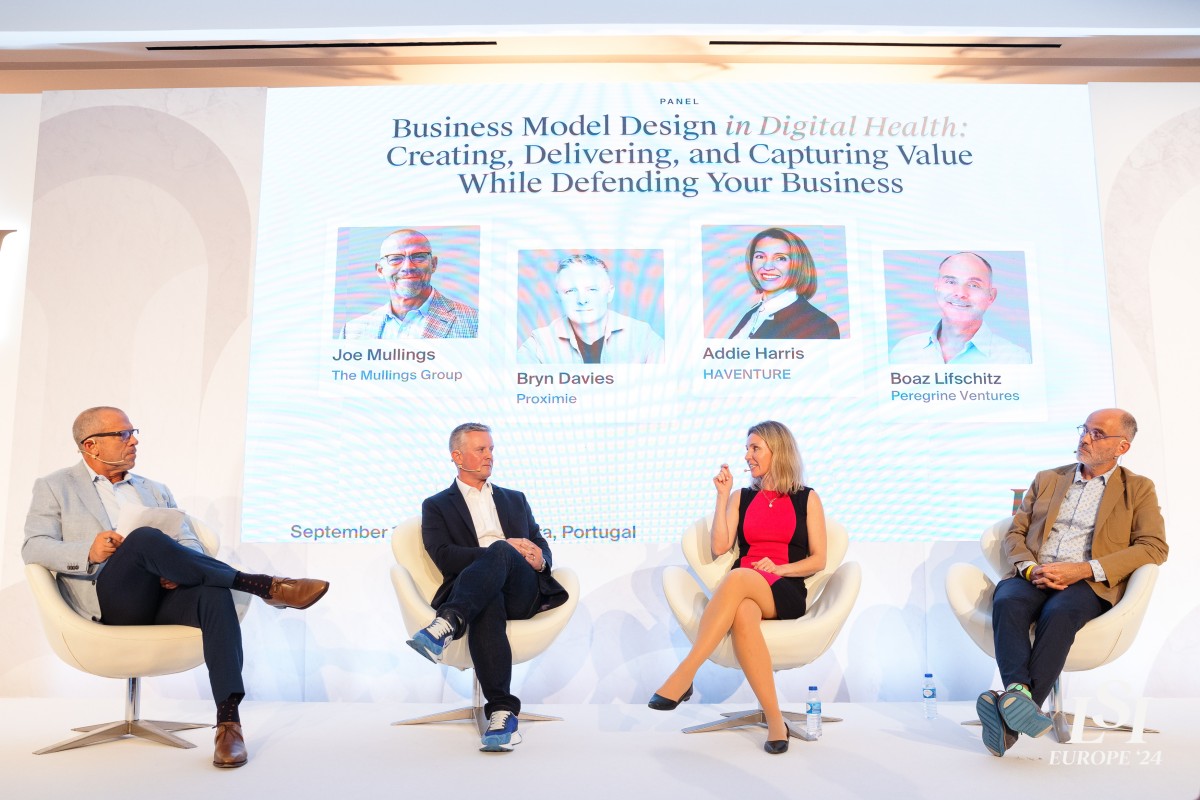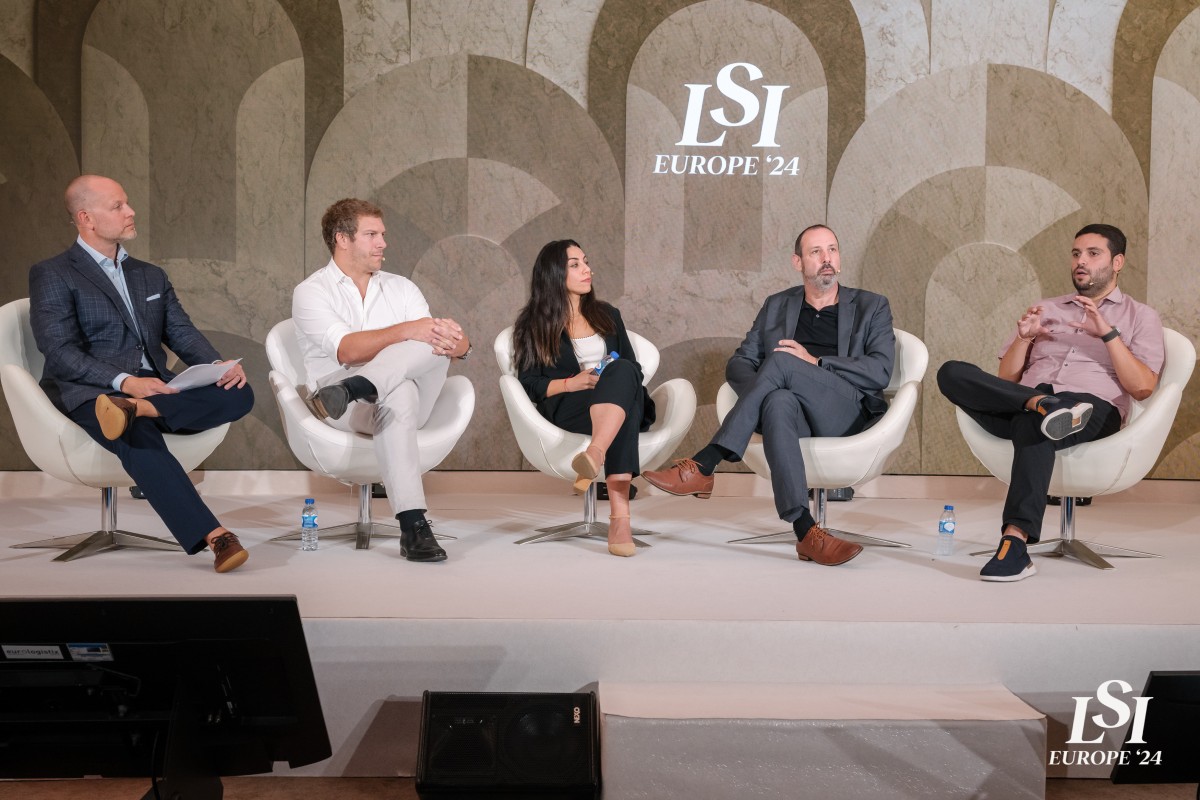-Nicole-J-Walker-Soyoung-Park-and-Gal-Noyman.png)
As the global population ages, the demand for medical technologies and digital health platforms tailored to older adults is rapidly increasing. At LSI Europe, a panel of experts gathered to explore this evolving sector known as AgeTech: the intersection of aging and technology. Their conversation covered everything from caregiver burden and systemic inefficiencies to early diagnostic tools, patient engagement, and how AI and robotics may reshape the future of senior care.
Moderated by LSI’s Henry Peck, the session featured Gal Noyman (LionBird), Soyoung Park (VU Venture Partners), and Nicole J. Walker (multiple boards, including the Alzheimer’s Association). Together, they unpacked the macro trends and micro hurdles defining the AgeTech landscape.
What Is AgeTech, Really?
The term “AgeTech” often evokes visions of assistive devices or smart home sensors for older adults. But the panel quickly expanded that definition.
“To me, AgeTech is really about aging in the space that you want to and in the way that you want to,” said Walker. “It can be anything from a service to a lifestyle to the housing choices that you need to make. It’s all-encompassing.”
Park agreed, framing aging as a continuous process that begins at birth and evolves throughout life. “Aging is not just about seniors,” she said. “We encounter changes in the body, mind, and environment from a young age. I see AgeTech as applying throughout that cycle.”
This holistic framing creates a broader aperture for innovation, from preventive healthcare and financial planning to mobility, mental health, and data access.
Unmet Needs: Data Fragmentation, Patient Engagement, and Caregiver Support
Aging populations face a growing burden of chronic disease and comorbidity. But the underlying issue is often systemic disconnection. Walker pointed to her personal experience as a caregiver: “My father was exposed to toxins, and the VA had the data predicting he’d likely develop hypertension, diabetes, Parkinson’s, and dementia. But his primary physician had no access to that. Everyone was blind until his diagnosis, which took two years.”
Park echoed the importance of data access and shared that most patients do not have sophisticated devices. “They don’t know how to use these fancy tools,” she explained. “So all they can do is take a picture and send it. That’s why user experience matters. Simplicity is the key.”
Noyman emphasized the role of engagement technologies, particularly in home-based care. “We need to influence outcomes for patients who are often hard to reach and struggling with multiple conditions,” she said. “In rural Medicare Advantage populations, we’re supporting companies like Heyday Health, which provides virtual-first primary care. Another is OneStep, which uses mobile-based gait analysis to track motor skills without requiring patients to do anything extra.”
Care coordination was another central theme. Noyman highlighted Mellie, a portfolio company working across caregivers, patients, and nurses in assisted living. “These environments often don’t even have electronic medical records,” she noted. “And the workforce is strained. We need better logistics, financial infrastructure, and clinical continuity across the care continuum.”
Walker reinforced this point, saying, “The caregiver population is an untapped resource. They go into homes three times a day and see it all. Their insights are powerful. As an entrepreneur, tapping into that memory source is a huge opportunity.”
Aligning Care Models with Real-World Aging
Despite growing awareness of the challenges, AgeTech companies often face difficulty navigating the fragmented healthcare system. Walker called out the misalignment between where technology is deployed and where care actually happens. “The reality is that everything happens at the primary care level,” she said. “But the average visit in the U.S. is eight minutes. So cognitive exams, for example, don’t get done. And when they do, it’s people like me (family members) reading the results, not the patient.”
Park raised concerns about relying solely on consumer tools. “Patients don’t have all the devices they need,” she said. “Remote patient monitoring companies need to be prepared to cover 100% of the data, not just 90. We need more tech that meets people where they are.”
Noyman added that many solutions fail because they overlook the infrastructure gap between hospitals and senior care facilities. “We have EMRs in hospitals, but not in nursing homes,” she said. “And without that, continuous care is impossible.”
AgeTech and the Promise of AI and Robotics
As panelists looked toward the future, AI and robotics emerged as promising but nuanced opportunities. Park noted that caregivers account for an estimated 40% of the $65 trillion expected to be spent on senior care by 2030. “Labor is expensive, especially in the U.S.,” she said. “Humanoid robotics could help reduce the burden of routine monitoring and free caregivers to do what humans do best.”
She cited Figure AI, a humanoid robotics company in Sunnyvale, as an example of forward-looking potential. “They don’t want to have a camera on, but they have sensors. These robots could detect emergencies and notify hospitals or family members. They can even assist with walking.”
Walker agreed with the promise of automation but warned against removing the human element. “We talk to clinicians, but we don’t often talk to caregivers,” she said. “They have deep insights. The tools we design need to reflect that complexity, one that spans not just clinical outcomes but emotional and social care as well.”
New Care Paradigms and Payment Models
A major hurdle for AgeTech adoption is the lack of sustainable digital health business models in prevention and long-term management. “There’s no money in prevention,” said Peck, summarizing a common refrain. Walker elaborated: “U.S. health systems operate on razor-thin margins, often below 5%. They don’t have the capacity to fund value-based care at scale.”
Noyman believes the shift is possible through Medicare. “Over 65, this is government-paid care. The incentives are there,” she said. “But it depends on access to accurate and comprehensive data. With better infrastructure, value-based care becomes a reality.”
She also emphasized workforce optimization as a path forward. “In a virtual-first care model, one physician may support thousands of patients with a team of nurses, dietitians, and health promoters,” she explained. “We need everyone working at the top of their license. That’s how we scale.”
AgeTech and the Role of Big Tech
Big Tech’s entry into healthcare was met with cautious optimism. Park described their involvement as inevitable. “Companies like Google are already collecting voice and image data. They’ll try, fail, and try again. But this creates opportunities for startups who understand real-world constraints and patient needs.”
Walker saw the consumerization of healthcare as a strength, not a threat. “At Abbott, we treated diabetes like a consumer problem,” she said. “That’s how the Libre continuous glucose monitor came to be. If you think like a consumer device company, you can build tools that both delight users and meet regulatory standards.”
Conclusion: Getting Capital Into AgeTech Innovation
To scale AgeTech solutions, the panelists urged entrepreneurs and investors to reframe their thinking. Noyman suggested looking to non-traditional backers like pension funds. “They care about long-term health and financial stress,” she said. “They’re motivated to reduce future costs.”
Walker encouraged founders to engage with disease-specific associations. “These groups may have small funds, but they have passion, reach, and insight into their communities,” she said.
Park left attendees with a simple but powerful message: “Find your special value. What’s the biggest problem you can solve? That’s how you make an impact, and that’s how you build a company that truly moves the needle in AgeTech.”




